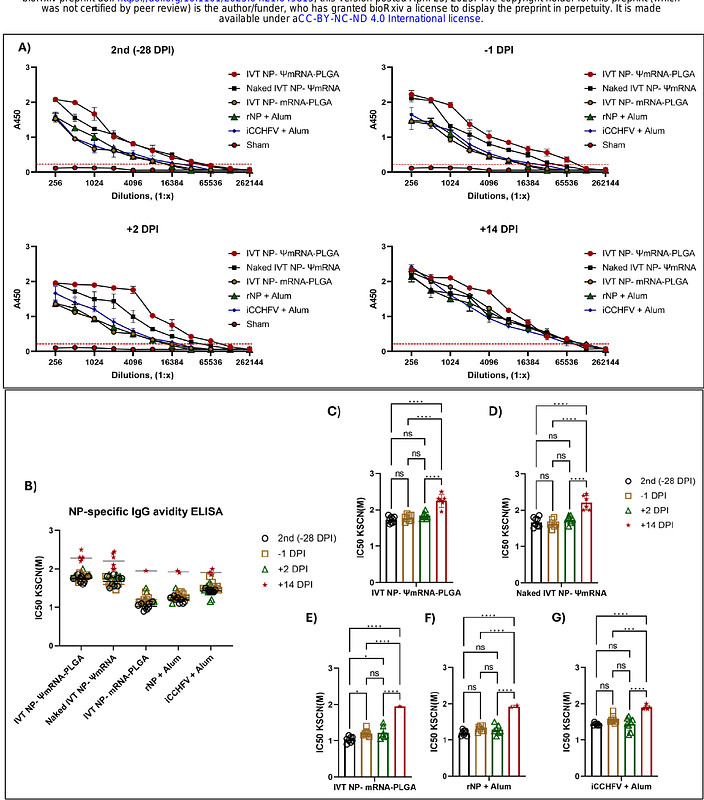Complete Protection Against Lethal Crimean-Congo Hemorrhagic Fever Virus (CCHFV) Challenge in Mice Afforded by Immunization with Modified mRNA Encoding the Nucleocapsid Protein (NP) Alone

Complete Protection Against Lethal Crimean-Congo Hemorrhagic Fever Virus (CCHFV) Challenge in Mice Afforded by Immunization with Modified mRNA Encoding the Nucleocapsid Protein (NP) Alone
Keskin, S.; Pavel, S. T. I.; Sak, R.; Bahadori, F.; Aslan, A. F.; Aktas, M.; Karakecili, F.; Kalkan, A.; Özdarendeli, A.; Doymaz, M. Z.
AbstractCCHFV has the potential for human-to-human transmission, and there is no effective and approved vaccine or treatment. Therefore, the development of an effective vaccine against CCHFV is of critical importance. Building on the success of mRNA-based vaccines during the COVID-19 pandemic, this study reports the development of a mRNA vaccine candidate expressing the NP of CCHFV. The CCHFV NP in vitro transcript (IVT) was designed with pseudouridine ({Psi}) nucleoside modification. As part of the preclinical characterization of the IVT vaccine candidate, the biochemical and immunological properties of NP were confirmed in Huh-7 cells transfected with IVT NP-{Psi}mRNA. Afterwards, the efficacy of IVT NP-{Psi}mRNA immunization was evaluated in immunocompetent BALB/c and transiently immunosuppressed (IS) C57BL/6 mice. In CCHFV challenge studies, IS C57BL/6 mice were used. IS C57BL/6 mice were immunized intramuscularly with 2 doses of NP- {Psi}mRNA, either naked or encapsulated in Poly(lactic-co-glycolic acid) (PLGA) nanoparticles, administered 14 days apart. High levels of CCHFV NP-specific humoral and cellular responses were demonstrated in BALB/c mice immunized with IVT NP- {Psi}mRNA. In challenge experiments, 100% protection was achieved by both the naked and PLGA-encapsulated IVT NP-{Psi}mRNA immunizations. Additionally, full protection was observed in mice immunized with inactivated CCHFV, whereas only 20% protection was detected in the unmodified IVT NP-mRNA vaccinated animals. In the protected mice, viral clearance was observed in the spleen, liver tissues, and blood on day 14 post-challenge. This study demonstrates that NP, the most abundant protein of the virus, is capable of providing full protection as a standalone vaccine candidate.